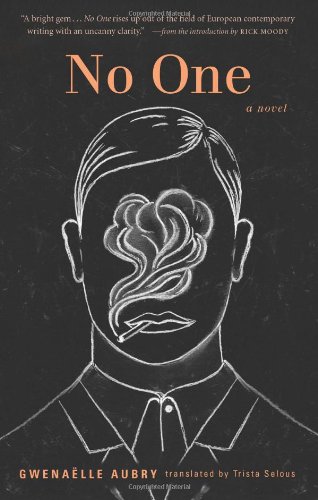
How to portray the state referred to as mental illness? Who tells the story and with what language? Narratives tend to be categorical and unspecific. Dr. Jung famously told his patient James Joyce that the difference between him and his daughter Lucia—a dancer who was permanently institutionalized in her late twenties because of a “deteriorating mental state,” later diagnosed as schizophrenia—was one of control. “You are like two people going to the bottom of a river, one falling the other diving,” Jung claimed. But what does that mean? Who was Lucia; what was her story?
French novelist and philosopher Gwenaelle Aubry tells us a unique story in her wondrous No One: A Novel, an unflinching portrait of her relationship with her “sorely tried father,” Francois-Xavier Aubry, a member of the Paris bar and a distinguished law professor who was afflicted with bipolar disorder. After his death, Gwenaelle finds a manuscript he has written titled “The Melancholic Black Sheep.” “Almost two hundred pages of careful handwriting, corrected and annotated all the way through.” On its cover he had written, “To be novelized.” In No One, translated by Trista Selous, Aubry weaves his words together with her own, structuring 26 meditations alphabetically, with chapter titles that are by turns whimsical and suggestive of mental illness: Artaud, Clown, Hoffman (Dustin, whom Aubry pere physically resembled), Pirate, Napolean (of the Far North). The result is part memoir, part rumination—all of it beautifully fragmented.
The structure aptly captures Francois-Xavier’s unpredictable moods. A loving father, he wrote, “I have known no lasting happiness but that which comes from the existence of my children.” And yet he moved out of the family home when his daughters were young. During visits, the author and her sister witnessed their father’s fluctuations: high-wire ups followed by periods of despondent, dark downs. In some scenes, he lives independently, able to host his daughters, feed and bathe them. Gwenaelle marvels, in retrospect, how during those visits he kept “his ghosts and delusions at bay to perform the actions that cradle childhood.” She also recounts the times he roamed streets of his hometown all night long, or was physically absent, traveling to faraway countries. She sensed, during his confinements in clinics and institutions, a bond between him and the other residents. “I felt then that something was happening between them and him that was beyond us, that operated at unsuspected depths of distress and humanity.”
Gwenaelle acknowledges there is no surefire way to understand someone in a manic state, although she and her and her sister try. “Sensing its absurd nature, we gave him advice—cut your hair, do yoga classes, read novels—advice he would receive in silence, absently, and we would need to make a huge effort not to fall with him into that silence, that absence, to keep speaking to him in the vain, proud language of the living.” But she still manages to give us some access to her father’s troubled mind. With deft humor, Aubry conveys how entering his unsettled mindset became a way to forge a tenuous bond, even after his death. Like Joyce’s daughter, he fell into his madness. And like Joyce, Gwenaelle goes diving in after him—maintaining control even while staring into his chaos.
The novel begins with Aubry quoting Artaud, who went mad and was confined to Rodez, articulating his misery, his sense of invasion, what it is like “to have nothing inside but a hell of outsiders.” But she also notes that Artaud saw in himself some measure of greatness: “I am a great poet, that’s all.” Aubry’s father, in contrast, had no such sense. “My father was not a great poet, that’s all. He didn’t enshrine his suffering in beauty and power, his madness in genius.” In fact he wrote so that, in the end, he had “ the right, at last, to be no one.”
True. And yet: He left a narrative. His daughter read and engaged with it to compose another narrative. The result is a finely tuned portrait of a man going through periodic “terrible times” and a potent literary masterpiece.
Lynn Crawford is a novelist and critic whose books include Simply Separate People, Two (Brooklyn Rail/Black Square Editions, 2011).